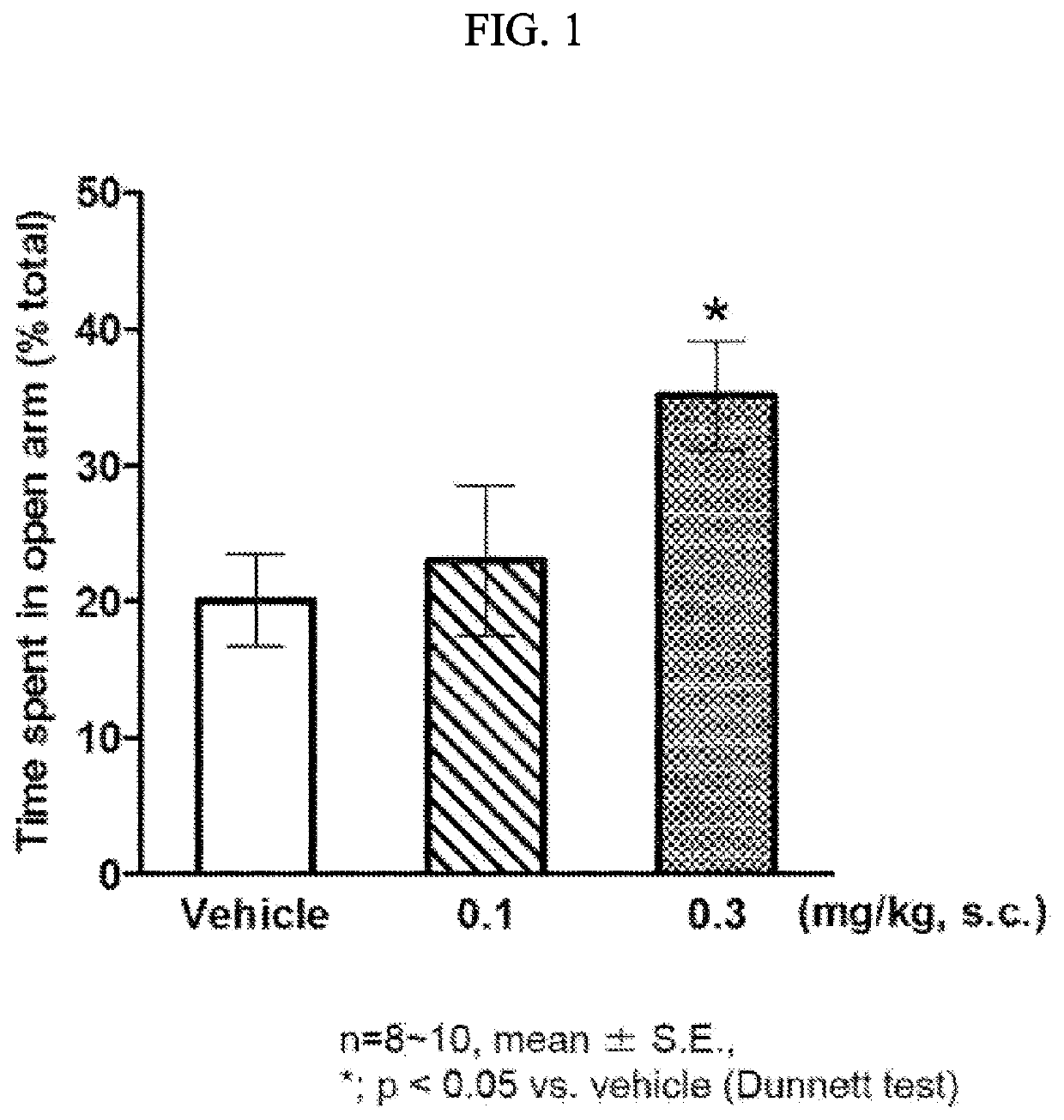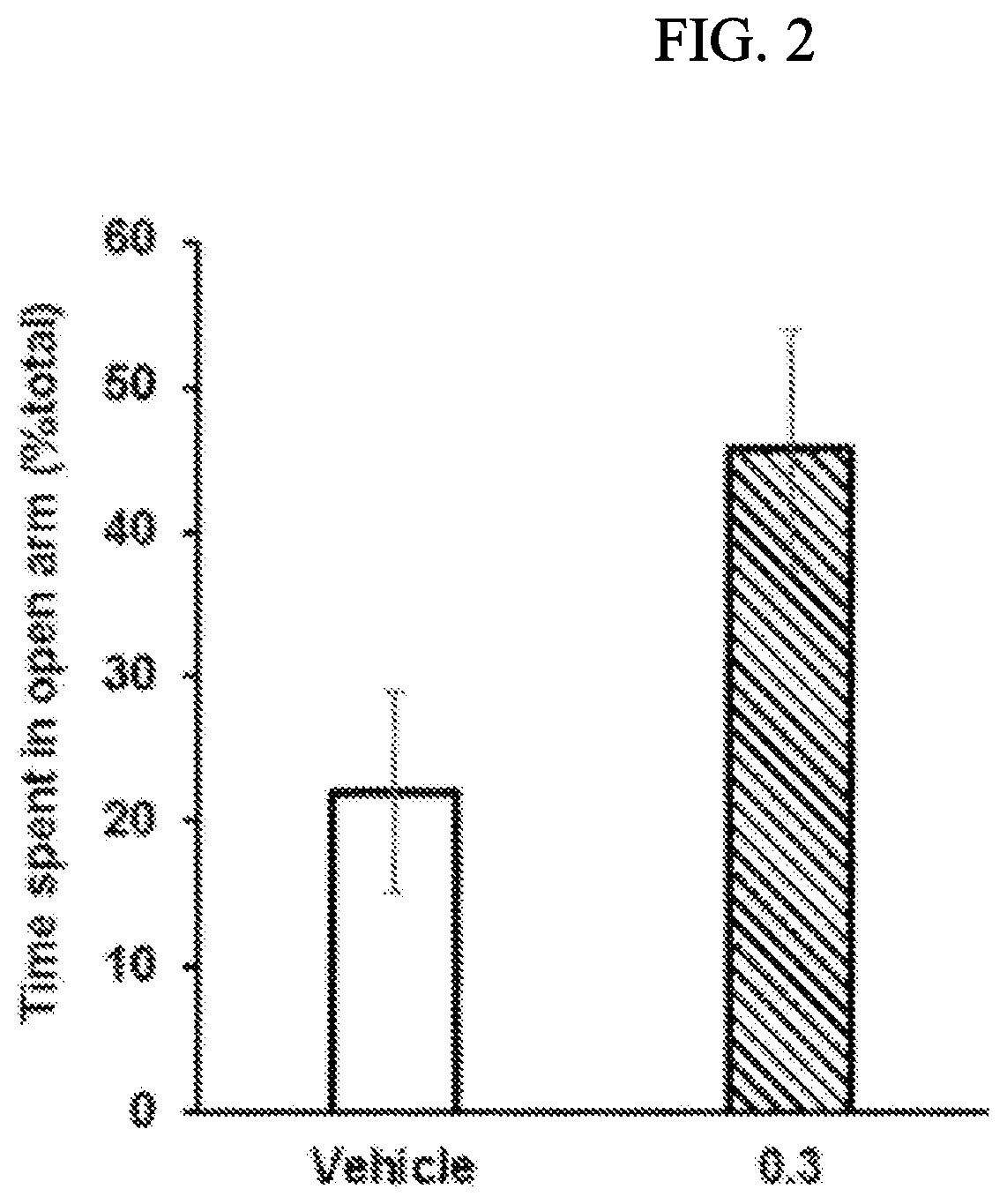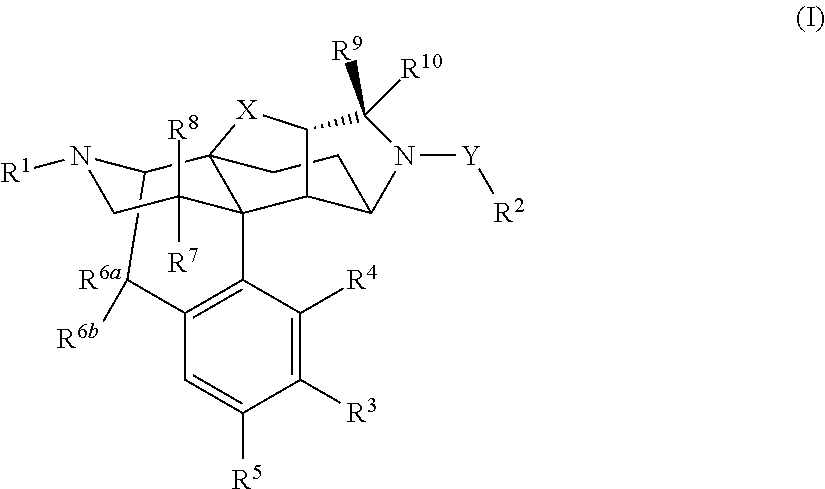Morphinan derivative
a derivative and morphinan technology, applied in the field of morphinan derivatives, can solve the problems of drug abuse, inability to tolerate, drug abuse, etc., and achieve the effects of suppressing gastrointestinal motility, reducing drug abuse, and reducing drug abus
- Summary
- Abstract
- Description
- Claims
- Application Information
AI Technical Summary
Benefits of technology
Problems solved by technology
Method used
Image
Examples
reference example 1
Synthesis of (1S,3aR,5aS,6R,11bR,11cS)-14-(cyclopropylmethyl)-2,3,3a,4,5,6,7,11c-octahydro-1H-6,11b-(epiminoethano)-1,5a-methanonaphtho[1,2-e]indol-10-ol
[0190]
[0191]Into a 300-mL round bottom flask, (1S,3aR,5a5,6R,11bR,11cS)-14-(cyclopropylmethyl)-10-methoxy-2,3,3a,4,5,6,7,11c-octahydro-1H-6,11b-(epiminoethano)-1,5a-methanonaphth[1,2-e]indole (372 mg, 1.02 mmol) synthesized according to the method of WO2013 / 035833, Example 67 was added, and dissolved in dichloromethane (5 mL), the solution was vigorously stirred at 0° C. for 20 minutes, then a 1.0 M solution of boron tribromide in dichloromethane (5 mL, 5 mmol) was added to the solution, and the resulting mixture was stirred at room temperature for 30 minutes. To the reaction solution, methanol (10 mL) was added at 0° C., and the resulting mixture was stirred at the same temperature for 1 hour.
[0192]The reaction solution was concentrated under reduced pressure, and the residue was suspended in chloroform (50 mL), and washed with 6% ...
reference example 2
Synthesis of (tert-butoxycarbonyl)-L-proline
[0195]
[0196]Into a 50 mL round bottom flask, L-Proline (500 mg, 4.3 mmol) and a saturated sodium bicarbonate aqueous solution (6.6 mL) were added, and di-tert-butyl dicarbonate (1 mL, 4.8 mmol) dissolved in THF (5 mL) was added dropwise thereto in an ice bath. Thereafter, the resulting mixture was stirred at room temperature for 19 hours. THF was distilled off. Thereafter, ethyl acetate was added, and 3 N hydrochloric acid was added dropwise until the aqueous layer reached pH 2. Extraction with ethyl acetate was performed for the reaction solution three times, and the collected organic layer was dried over sodium sulfate. The insoluble matter was distilled off. Thereafter, the filtrate was concentrated under reduced pressure to obtain the title compound.
[0197]1H NMR (CDCl3, 400 MHz): δ=4.21-4.27 (m, 1H), 3.26-3.64 (m, 2H), 2.20-2.52 (m, 1H), 1.81-2.14 (m, 3H), 1.47 (br s, 6H), 1.43 (br s, 3H). CO2H is not seen.
reference example 3
Synthesis of (tert-butoxycarbonyl)-D-proline
[0198]
[0199]In a similar manner to Reference Example 2, the title compound was obtained using D-proline (50 mg, 0.43 mmol) and di-tert-butyl dicarbonate (0.11 mL, 0.48 mmol).
PUM
 Login to View More
Login to View More Abstract
Description
Claims
Application Information
 Login to View More
Login to View More - R&D
- Intellectual Property
- Life Sciences
- Materials
- Tech Scout
- Unparalleled Data Quality
- Higher Quality Content
- 60% Fewer Hallucinations
Browse by: Latest US Patents, China's latest patents, Technical Efficacy Thesaurus, Application Domain, Technology Topic, Popular Technical Reports.
© 2025 PatSnap. All rights reserved.Legal|Privacy policy|Modern Slavery Act Transparency Statement|Sitemap|About US| Contact US: help@patsnap.com



